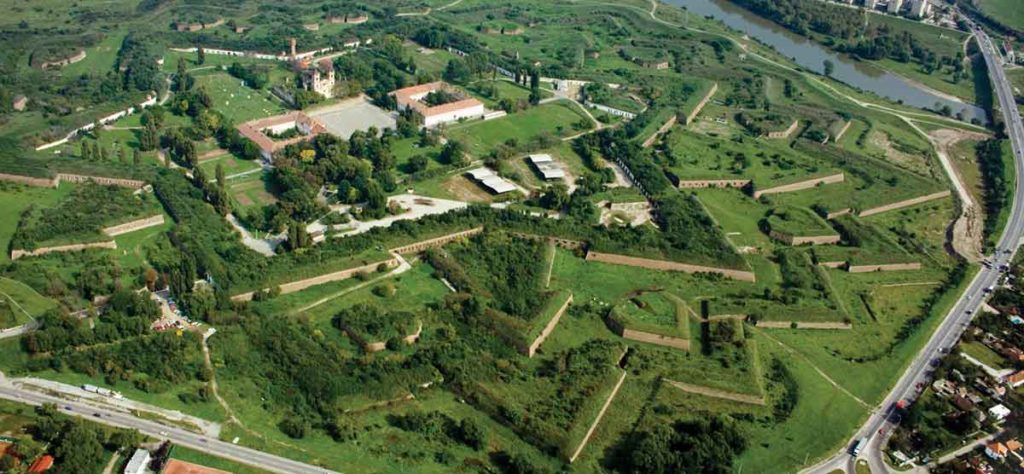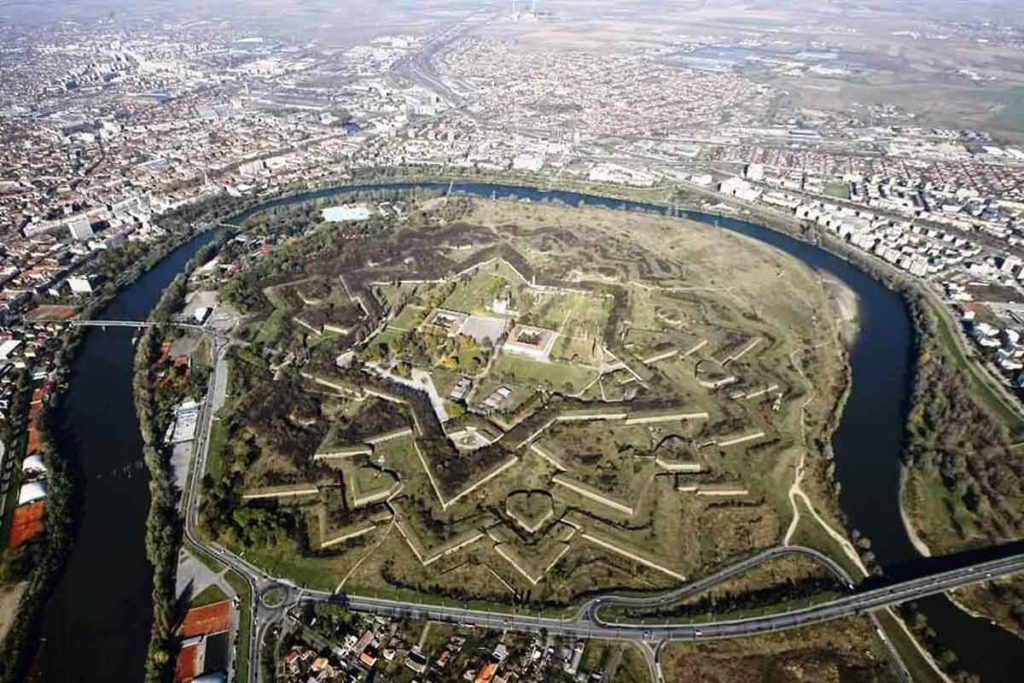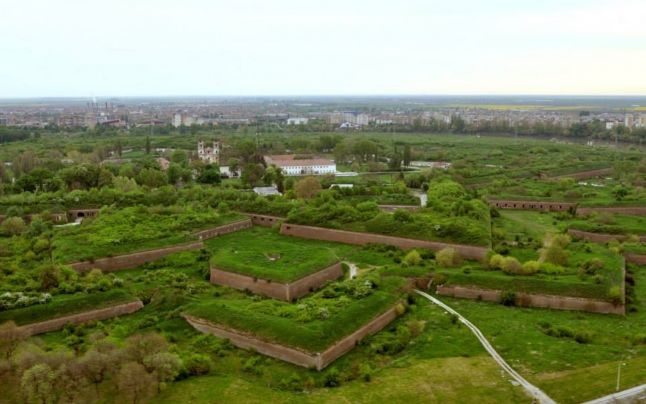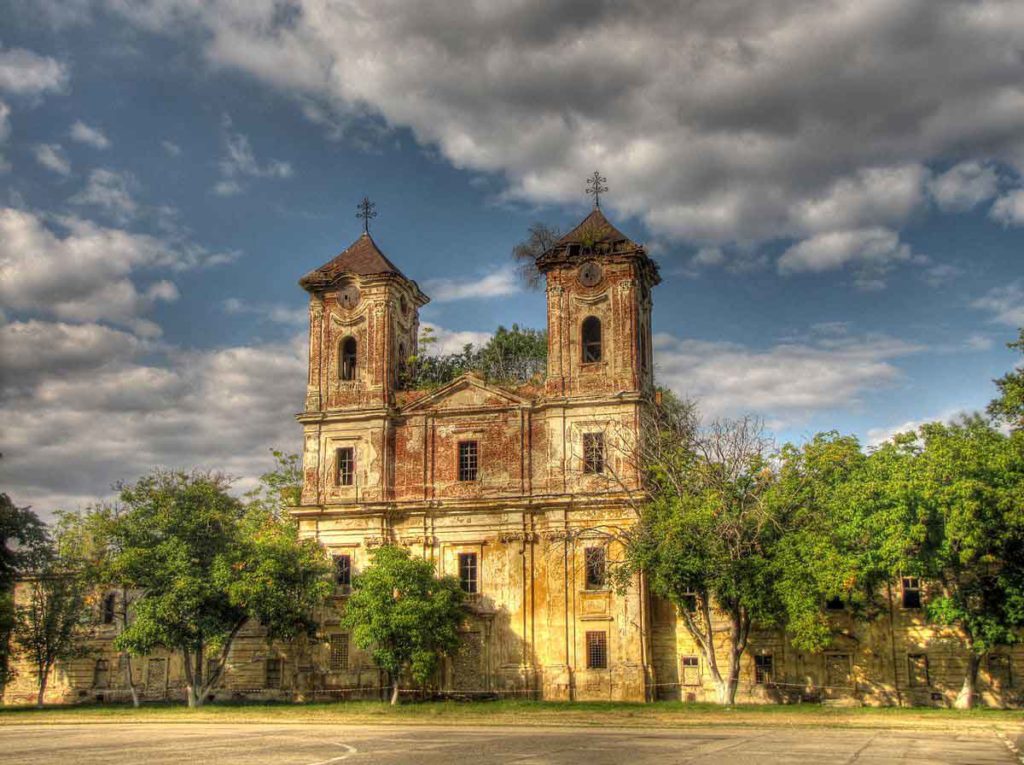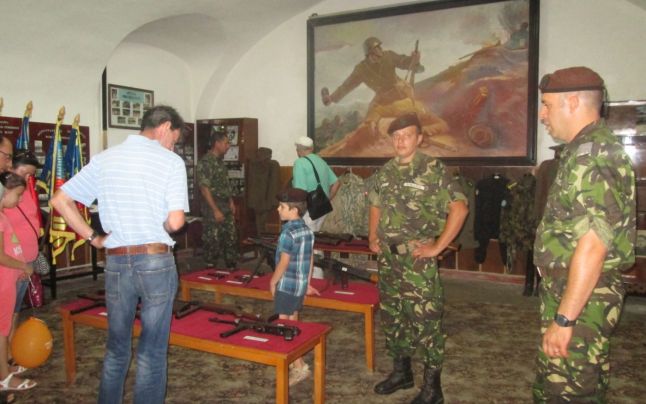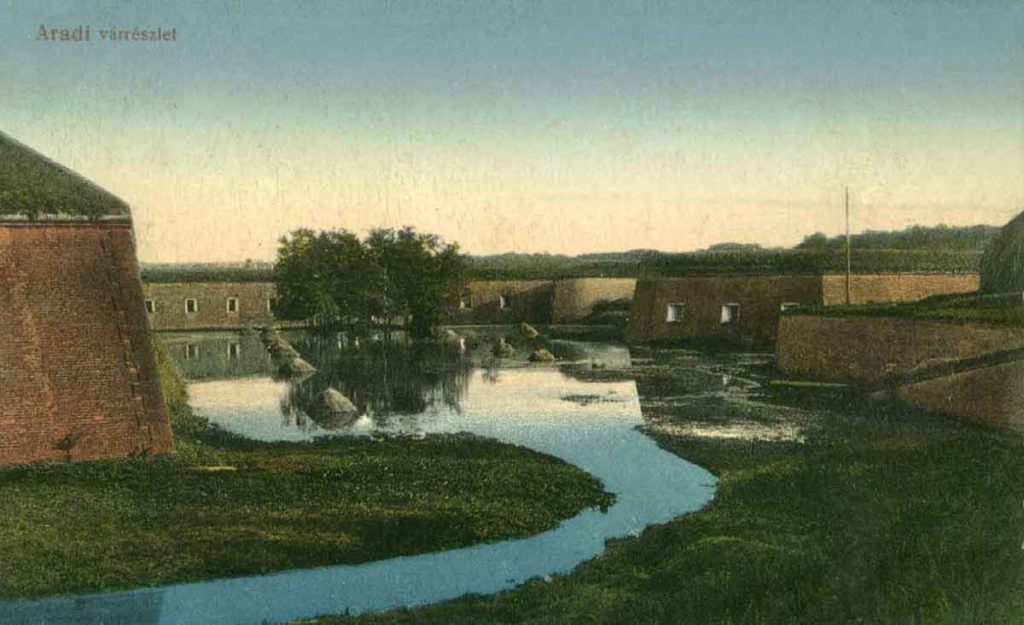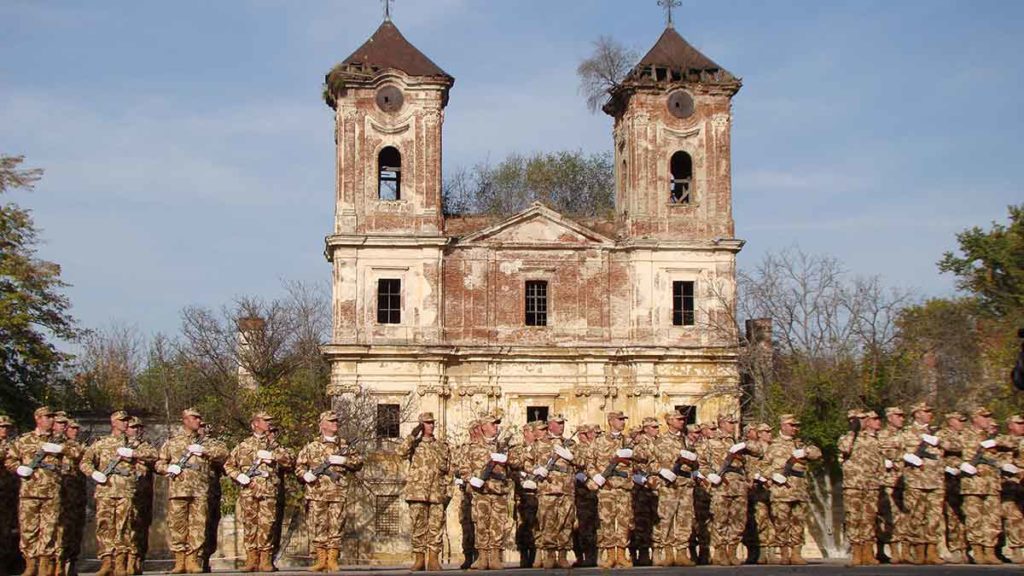Fortress of Arad – Summary
The Fortress of Arad is a solid fortification system which was built in the 18th century at the orders of, and with the funding from, the Habsburg Empress, Maria Theresa. The cost to complete and erect the fortress reached 3 million Gulden (the currency used by the Habsburg Monarchy at the time). The fortress was built as an inner fortification system to protect the outer region of the Habsburg empire from conflicts in the area.
The main conflicts at the time were the ongoing wars between the Habsburgs and the Turkish Ottomans. The location for the fortress was chosen strategically to be at the crossroads of two very important trade routes of the day. It lies in the middle of the trade routes that led from the West to the Transylvania Region, and from the North, Oradea, and Satu Mare, to Timisoara, and down to the Danube waterway.
After the fortress was completed, it housed military units of the Habsburg Empire. The units were stationed deep inside the fortress where they trained and studied different tactical variations. The military presence at the fort transformed Arad into a key strategic and focal point of the empire. Arad and the fortress played a vital role throughout the years in allowing the Habsburgs to continue maintaining their dominance over the land.
The fortress has alternated its use numerous times throughout the years. At one point it was used as a military prison which was known for keeping its prisoners in cruel and inhumane conditions. In 1794 the prison housed 1,200 French soldiers of the Napoleonic Wars. During later times the fortress was used as a military garrison. The garrison held the 93 Infantry Regiment of the 1st Romanian Infantry Division during the interwar period.
The Fortress of Arad is known by a few other names, those names include: in English, The Fortified Town of Arad, in Romanian, Cetatea Aradului.
Fortress of Arad – Table of Contents
- Fortress of Arad – Architecture
- Fortress of Arad – Attractions
- Fortress of Arad – History
- Fortress of Arad – Present Day
- Fortress of Arad – Visitor Info
Fortress of Arad – Architecture
Construction of the fortress started in 1763 and was carried out by the slave labor of thousands of serfs. The project took 20 years, with pauses in work because of lack of available labor, before it was finally finished in 1783. The fortress’s chief architect was an Austrian general by the name of Ferdinand Philipp von Harsch. The design is an advanced variant of the Vauban star-shaped style of the fortress. The Vauban style was pioneered by King Louis XIV’s military engineering genius, and Marshals of France, Sébastien Le Prestre de Vauban.
The Fortress of Arad resembles a shield, it’s a star with six corners (hexagram). The circumference of the fort is roughly two miles. It was built with three rows of underground pillboxes as well as several trenches. In the past, the trenches had the ability to be flooded with water from the surrounding Mureș River. The fortress is flanked by two pentagonal redoubts which provide 296 holes for shooting artillery.
The walls are 3 meters thick and were built from brick and filled with mud and dirt in order to lessen the devastation from incoming explosions. They were also designed and constructed tactically to be able to ricochet howitzer-shells if launched at them.
While the fortress was being constructed, military leaders who were working on the project wanted to relocate (what was then a town) Arad to a different area. However, efforts to relocate the town fell short because the citizens were greatly opposed to those plans. The people sent numerous appeals of disapproval for relocation to Vienna. Their appeals were granted by the court and Arad’s location was preserved.
Fortress of Arad – Attractions
Contained inside the fortress is a military hospital (transformed from an old monastery) a Baroque Style Catholic church (constructed in 1705), and several other living quarters which, up until 1861, housed Franciscan monks. Presently the church and buildings inside the fortress display derelict appearances from being ravished by the hands of time. No current efforts (2017) have been made to modernize or renovate them.
Also inside the fortress, there are 334 blockhouses which are arranged strategically in bastions around angles of the wall to allow for tactical deployment for the defense of the fort. The blockhouses were designed to accommodate 2,940 troops during normal times and with the possibility of up to 4,030 during times of duress.
The Fortress of Arad also contains a museum that houses many historical items such as, photographs, paintings, flags, medals, maps, military uniforms, weapons, and many other fascinating objects. Some of the weapons on display include a Kalinca rifle from 1877, a bayonet from the War of Independence, and a military machine gun.
Fortress of Arad – History
Throughout its history, the fortress has been occupied by the militaries of different nations. In 1849 during the Wallachian Revolution, after 9 months of besiegement, it fell under the occupation of the Hungarian Revolutionary army. The occupation by the revolutionists only lasted 46 days before the Habsburg army retook the fort.
In as recent times as World War I the area around the fortress was used as a prison camp for Serbs and civilians from Bosnia-Herzegovina. The occupation of those citizens ended up being a tragic moment in history as an estimated 4,300 of them died horrific deaths due to catching typhus and from maltreatment. At the entrance of the fortress, there’s a plaque placed there in their honor.
The Fortress of Arad also held the infamous Gavrilo Princip, the man who killed the heir to the throne of Austria-Hungary, Archduke Franz Ferdinand. The assassination of the Archduke is believed by many historians to be the catalyst that started World War I.
After World War I the fortress became occupied by allied French and Serbian troops until July 1919 when it was finally returned to the Romanian army. On November 20th, 1942, the Romanian army fought a battle with two Soviet armies at the fort. The Romanian’s suffered great casualties and lost many soldiers and military officers. The Soviet “liberator” troops eventually took over the fort and moved a tank unit inside it.
On September 12, 1944, Romania had an armistice with the Soviet Union, which gave the Soviet Red army rights to occupy the fortress. The Soviets deserted the fortress 14 years later in 1958 and the Romanian army once again retained occupation. In 1995, during the process of restructuring and modernizing Romania’s army, the 191st Infantry Battalion, known as the “Colonel Radu Golescu,” took occupation of the fortress.
Fortress of Arad – Present Day
As of 1999 to present, the Fortress of Arad is home to the Mixed Romanian-Hungarian joint peacekeeping Battalion. It remains an active and functioning military garrison. The fortress is Romania’s best-preserved Vauban style fortress and is considered one of Europe’s two most complex designed Vauban style fortresses.
Since 2000, efforts have been made by Arad officials, and the Arad Fortress Association, to turn the site into a tourist and cultural studies destination. However, those efforts had fallen short due to lack of funding and because of objections from Romania’s Ministry of Defense. Discussions and attempts for renovations (estimated to cost 180 million Euros) and at turning the fort into a tourist destination are still ongoing. The current (2017) Arad mayor, Gheorghe Falcă, is in favor of and pushing for, the touristic transformation to take place. Proponents in favor of transforming the site argue that doing so will provide Arad with huge tourist, cultural, social and economic potential.
Progress has been made for the transformation and in 2010 a decision (nr. 1100/2010) was proposed (signed in 2014) to transfer the fortress to the city of Arad as soon as the renovation of the nearby Arad Gai Barracks (where current troops housed in the fortress will be relocated) is completed. The decision for transferring the fortress to the city of Arad stipulates that renovations for suitable living conditions at the Gai Barracks be completed within 10 years, which leaves a deadline of 2024. As of the current year 2017, renovations of the Gai Barracks are far from being completed, hardly any work has been done, and it’s apparent that they remain years away from being finished.
The slow progress of abiding by the terms of the decision has left a great deal of uncertainty if, in-fact, the fortress actually will be transferred over to the city to be transformed into a tourist destination. Further complicating the transitioning matter is the fact that city officials are not allocating sufficient funds for a renovation of the Gai Barracks. When pressed by reporters about the progress of the project, the officials give vague and elusive responses with no definitive answer as to how long the project will take or if it actually will be completed.
Fortress of Arad – Visitor Information
Location
The Fortress of Arad (Cetatea Aradului) is located in the City of Arad, in Western Romania.
The fortress is found in the city’s Subcetate neighborhood, on the left bank of the Mureș River, right in between the former military border of the Ottoman and Habsburg Empires.
Visitation
The Fortress is open to tourist visitation once a year on the holiday of Armed Forces Day, October 25th.
Although access inside the fortress is limited to that day only, exploration and viewing of the fortresses outside walls can be done year round.
